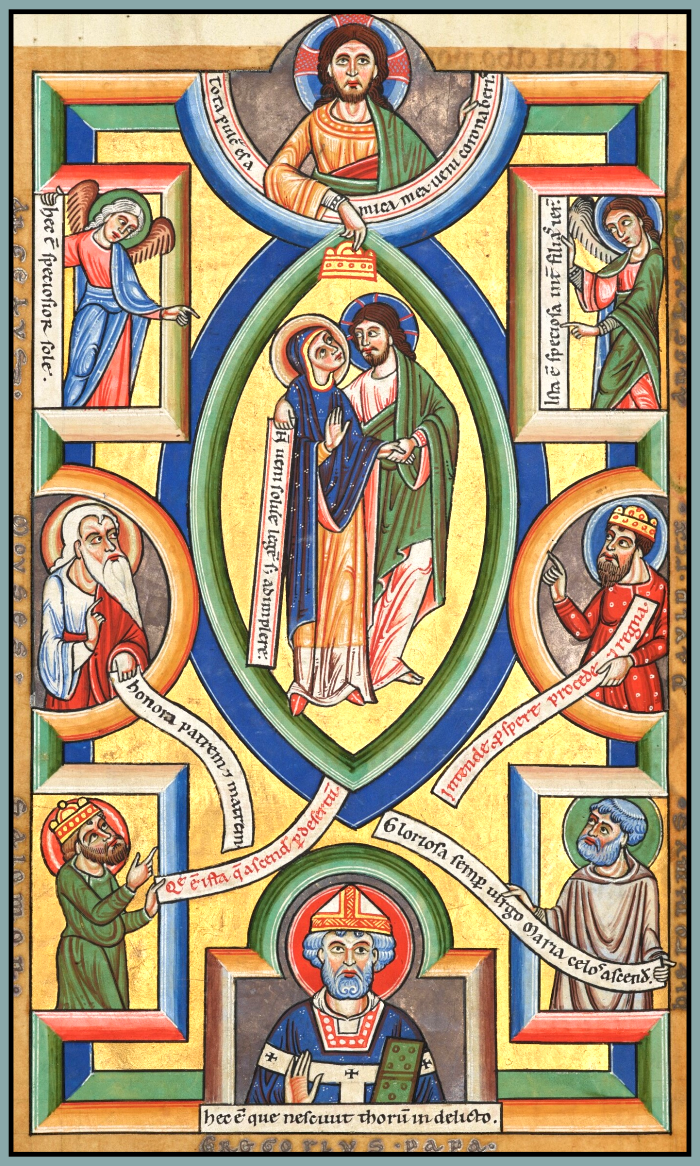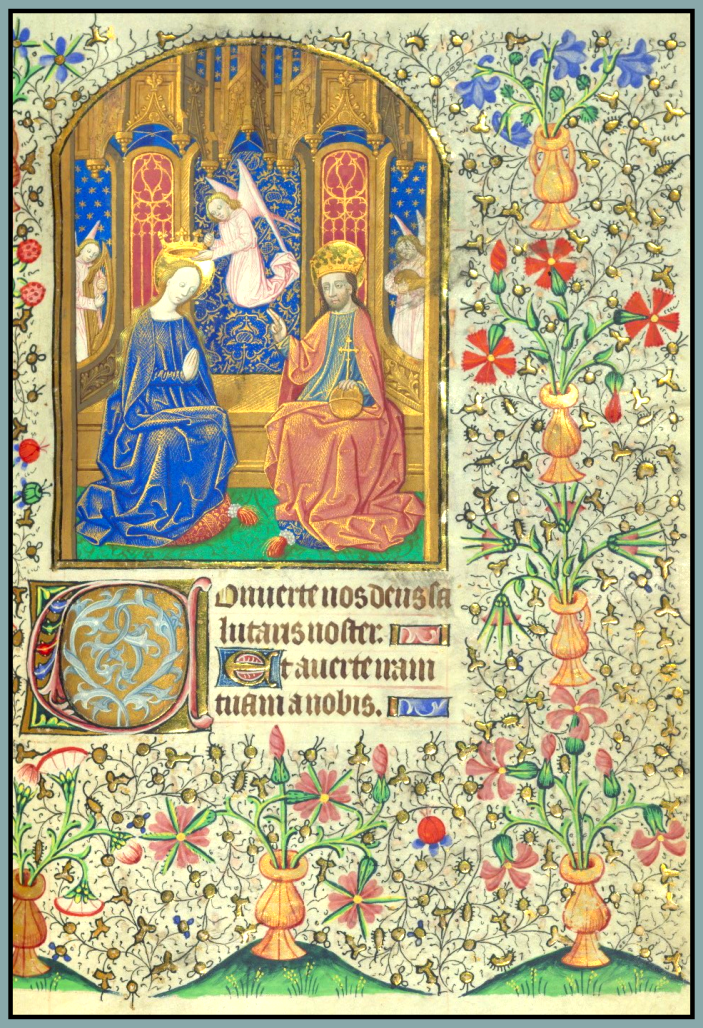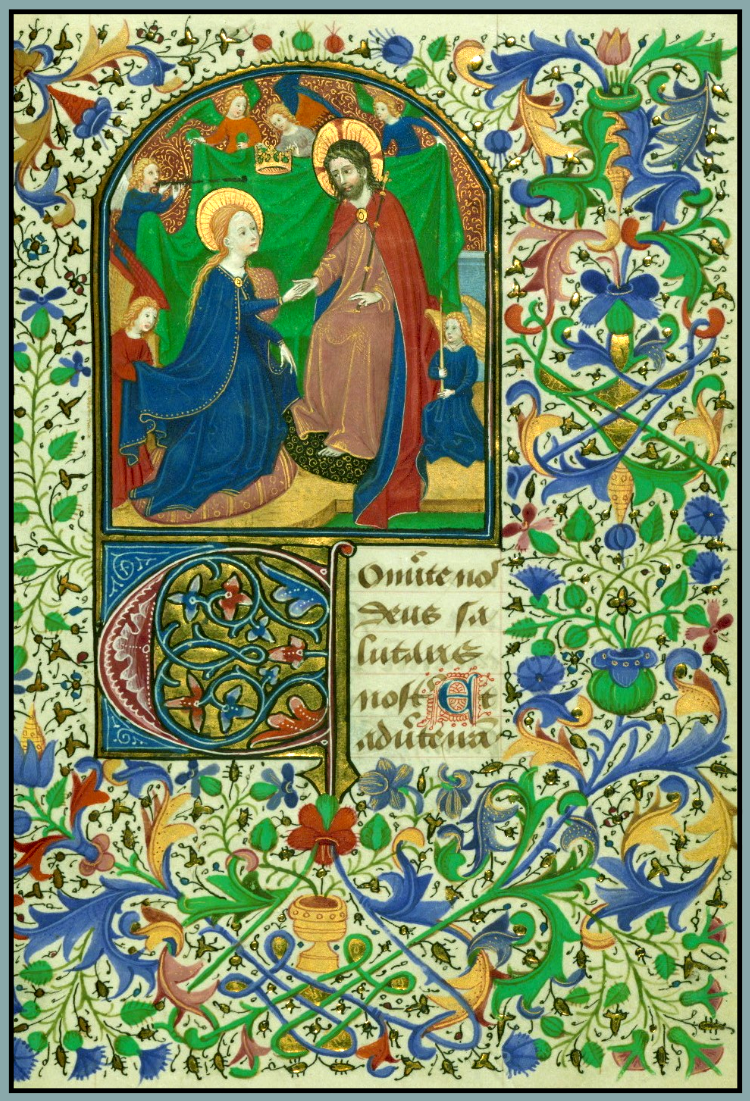The Medieval Year: Marymass, 18th day before the Kalends of September, AD 1224
Otherwise known as Thursday, August 15th, (eight hundred years before) 2024.
The Medieval Year, a weekly feature of the Via Mediaevalis newsletter, gives us an opportunity to appreciate calendrical artwork from the Middle Ages, reflect on the basic tasks and rhythms of medieval life, and follow the medieval year as we make our way through the modern year. Please refer to the first post in this series for more background information!
I decided to send this week’s edition one day early, so that it would coincide with one of the most cherished celebrations of the medieval year: St. Mary’s Day, now more commonly known as the Feast of the Assumption. More than any other day in the calendar, August 15th was an opportunity for Christians of the Middle Ages to express their love for St. Mary, the Mother of Christ.
And medieval calendars are actually an excellent way to prove that St. Mary’s Day was a very important celebration: If you gather up hundreds of medieval calendar manuscripts from different regions of western Europe, you will find that each day can have quite a few different commemorations. August 12th, for example, has eleven, August 13th has seven, and August 16th has six. But August 15th has only one: the Feast of the Virgin Mary.
If you’re a regular reader of The Medieval Year, you know that August was a time when medieval communities were busy with the grain harvest. But nobody was working in the fields on August 15th; as with Sundays and other high holy days, manual labor was forbidden, and instead folks were expected to attend the solemn feast-day liturgy, rest their bodies, refresh their souls, and make merry with family and friends. Some would have been thanking God for His bounty by dedicating Lammas bread to the Virgin Mary; others were gathering medicinal herbs and flowers to be taken to the church and blessed; and perhaps a few were relaxing under an English elm tree singing “Mirie it is,” or under a Spanish cherry tree singing “Stella splendens”:
I have some lovely artwork to share with you on this special day in the medieval calendar. The images below depict two illustrious moments in Mary’s life: her Assumption—that is, her entrance, body and soul, into heaven—and her Coronation as heavenly queen. In my experience, it’s easier to find the Coronation, or the Coronation and Assumption together, in older manuscripts. This makes sense, because the doctrine of the Assumption developed gradually during the medieval period, whereas the idea of Mary as a celestial queen seems to have come naturally to the intensely monarchical societies of the Middle Ages.
Let’s start with a relatively simple, late-fifteenth-century piece:
Notice the prominent, if not perfectly natural, perspective in the floor tiles and the prevailing sense of balance: the pillars, windows, angels, and human figures are all highly symmetrical. This Assumption is a relatively modest, meditative event occurring within the confines of a sacred structure.
The next illustration, from a twelfth-century manuscript called the Stammheim Missal, is quite unusual and makes use of a delightful technique for integrating verbal art into visual art. The phrases written on the scrolls praise Mary as a beautiful queen.
The mixture of curved and rectangular geometry in this painting creates a feeling that combines solidity with soothing movement.
In the following illustration from a fifteenth-century French Book of Hours, the coronation scene is almost lost amidst the extraordinary floral motifs.
We see here the late-medieval preference for blue as Mary’s characteristic color, and notice that blue is used sparingly in the surrounding decorations—just enough to unify the composition and bring the entire page to life through a harmonious palette.
In this next piece from another fifteenth-century Book of Hours, we have a similarly stunning display of floral motifs and vegetal geometries surrounding a charming depiction of the Coronation. I especially like the angel holding Mary’s mantle.
At this point in history we’re transitioning into Renaissance aesthetics, and I would say that this piece demonstrates a willingness to sacrifice proportion and harmony for the sake of bold color, dramatic lines, and lavish detail.
Finally, we have an early-sixteenth-century illustration, from a manuscript called the Spinola Hours, that provides a beautiful visual narrative of the Assumption: all in one image we see the Virgin’s empty grave, her funeral procession, and her triumphant ascent into heaven, where an eternal crown is waiting for her. Her characteristic color is on full display and contrasts strongly, yet serenely, with the green hues of the earth, which God has appointed to receive the lifeless bodies of the dead, but which has no dominion over a body so sacred as hers.











Blue is symbolic of high spirituality in Christianity. You’ll see it all over the orthodox iconography too.
I love that you have incorporated art works with your words. Art communicates in its own way.